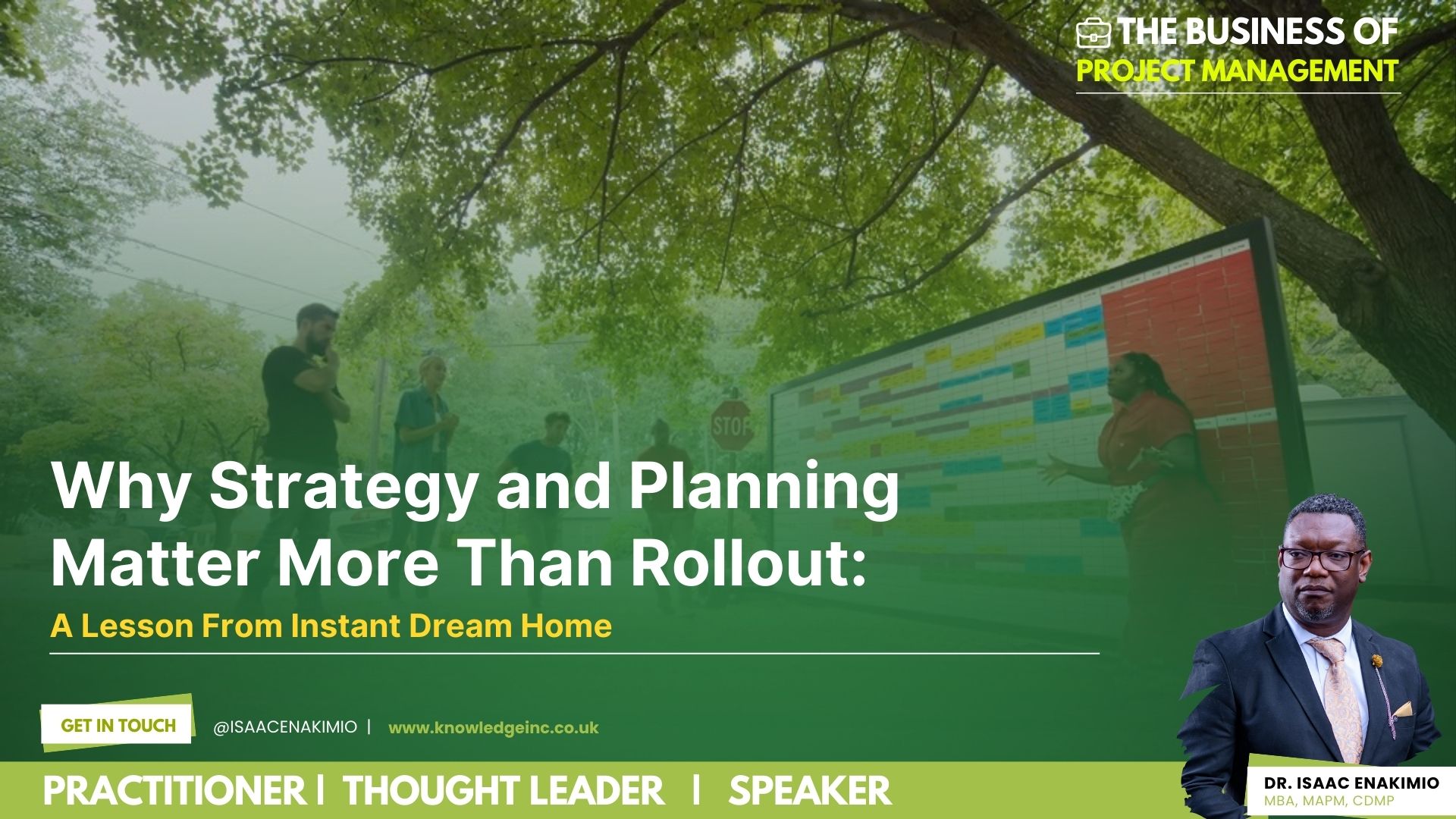When I began tutoring on the Information Technology Management for…
If you’ve ever watched Instant Dream Home, you know exactly what I mean when I say it’s absolutely inspiring. You’ve got 12 hours, 250 people, and a massive house transformation to pull off. It’s emotional, high pressure, and somehow, incredibly smooth.
But here’s what really fascinates me: it’s not the final result that makes it all work, it’s the meticulous planning behind the scenes.
Every cut, every fixture, every colour choice has been rehearsed, tested, and synchronised like a well-conducted orchestra. Because when the clock starts ticking, there’s no room for figuring things out on the fly.
And that, right there, is the same principle that needs to play out repeatedly in the real world of business and transformation projects.
Great Delivery Starts Long Before Day One
In my experience leading major digital and business transformation programmes, one truth continues to hold firm:
If you get the planning wrong, the rollout is where you’ll pay for it.
And unfortunately, too many organisations still treat planning as an afterthought. There’s pressure to move fast, prove value, and “just get started.” The assumption is that once implementation kicks off, the magic will follow.
But the reality? Without proper planning, that’s when the cracks start to show.
What the Research Tells Us
Let’s ground this in the data:
- PMI research reveals that 11.4% of investment is wasted due to poor project performance, much of which stems from inadequate planning.
- According to Gartner, 45% of IT projects fail due to lack of clear objectives and strategy.
So when planning is rushed or underfunded, projects don’t just miss deadlines, they fail to deliver meaningful outcomes.
Planning Is Not Admin Work, It’s Strategic Work
One of the biggest misconceptions I’ve seen is that planning is some sort of bureaucratic hurdle to get through. It’s not. It’s where the foundation is laid:
- You define the vision and business case.
- You align teams and stakeholders.
- You identify risks and build mitigation strategies.
- You create the space to test, pilot, and adjust.
Skipping or skimming through that process is like skipping the blueprint and heading straight to construction. You might get something built, but it’s unlikely to last and almost guaranteed to cost more in the long run.
And About That Budget…
I’ve been in rooms where budget decisions were being made and heard things like, “Let’s reduce time spent on discovery,” or “We can cut back on the pilot phase.”
But what we save upfront, we often pay for fivefold during rollout. When issues crop up that could have been avoided. When teams are unclear about direction. When leaders scramble to manage expectations.
The irony? Rushing Planning to move faster often slows you down.
So What Can We Learn From Instant Dream Home?
That level of seamless delivery doesn’t just happen. It’s the product of:
- Thoughtful strategy
- Cross-functional collaboration
- Aligned purpose and priorities
- Detailed scenario planning
And just like in those renovations, one missed step can throw the whole project off.
The same is true for your business. Projects succeed or fail before the rollout even begins. Not because of how skilled the team is on the ground, but because of how well they were set up.
Final Thoughts
We live in a world that rewards speed, hence, we throw the words “Agile” around like a Frisbee. But when it comes to delivering transformational change, slowing down to plan properly is what accelerates success.
Planning is where you create clarity, commitment, and confidence. Implementation is just the execution of that vision.
So here’s the takeaway: don’t be in such a rush to “go live” that you forget to lay the groundwork.
A brilliant rollout begins long before Day One.
If you’re leading a transformation programme and want to ensure the strategy is as strong as the delivery, let’s connect. I help organisations align vision with action and turn planning into performance.
Author: Dr. Isaac Enakimio
Knowledge Incorporated
Business Transformation through Digital Strategies




